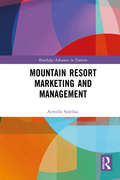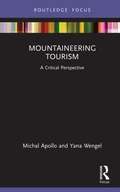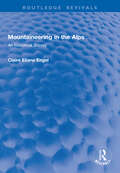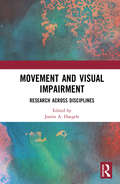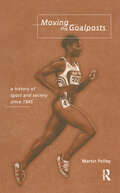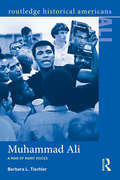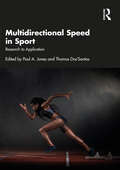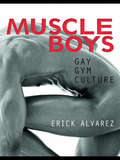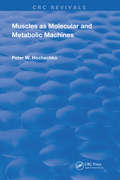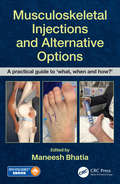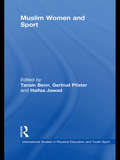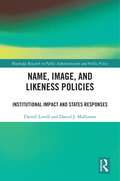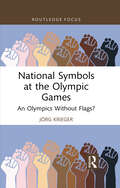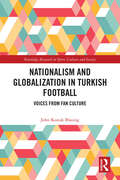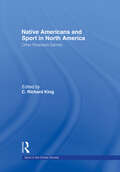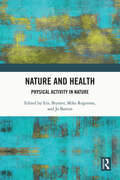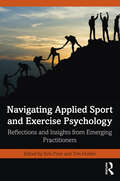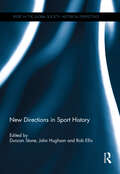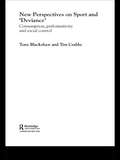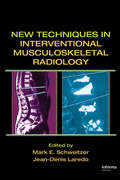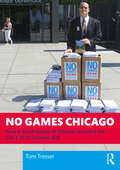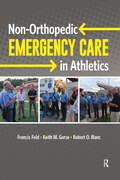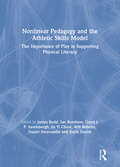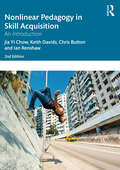- Table View
- List View
Mountain Resort Marketing and Management (Routledge Advances in Tourism)
by Armelle SolelhacMountain resort tourism is a competitive environment, experiencing increasing growth in new markets such as China, that require the knowledge and skills developed by mature markets. This book provides these insights by offering a critical and up-to-date examination of the mountain industry. This book covers branding, management, and revenue optimization in an industry where very heavy investments are requested and mature markets need to ensure they remain competitive. Chapters include interviews with professionals and international experts on mature markets to shed light on the development and marketing strategies that make these resorts successful. Major issues facing mountain resorts today are addressed, including climate change, sustainability, COVID-19, the experience economy, yield management and dynamic pricing policies, and investment management. Offering valuable knowledge on how to successfully market and manage ski resorts in an ever-changing and competitive environment, this will be useful reading for upper-level students, researchers and current practitioners in winter sports, destination development and management, sport tourism, and development studies.
Mountaineering Tourism: A Critical Perspective (Routledge Focus on Tourism and Hospitality)
by Michal Apollo Yana WengelThis book offers a critical account of the historical evolution of mountaineering and its relation to the phenomenon of tourism, providing an overview of recent developments linked to the diversification, commodification and commercialisation of mountaineering activity. Mountaineering, broadly defined as hiking, trekking and climbing, is now a mass phenomenon, with continually growing numbers of trekkers, climbers and religious tourists hiking in mountain regions. Increasing visitor numbers require the current policies to be updated. The environments around high-mountain areas and their local resident communities, until recently cut off from civilisation, are sensitive to outside influences and have been abruptly exposed to the impact of mountaineering and related activities. This is the first book to disentangle overlapping terms and definitions related to mountaineering tourism. It identifies the key terms and turning points in mountaineering tourism and discusses the impacts of mountaineering tourism from an environmental, socio-cultural and personal perspective and identifies current tourism management policies. Finally, this book provides a continuum between the past and future of mountaineering tourism and aims to provide policy suggestions for sustainable management of fragile mountain regions. This will be of great interest to upper-level students and academics of tourism, as well as industry representatives and policymakers with an interest in adventure tourism and mountaineering.
Mountaineering in the Alps: An Historical Survey (Routledge Revivals)
by Claire Eliane EngelMountaineering in the Alps (1971) examines the two centuries of alpineering where mountaineering as we know it today was first invented and developed. It traces the first beginnings of the sport, as intrepid explorers ventured into the Alps, all the way up to the new developments of the late twentieth century.
Movement and Visual Impairment: Research across Disciplines
by Justin A. HaegeleThis is the first book to offer an in-depth review of research pertaining to individuals with visual impairments across the full span of movement-related disciplines, from biomechanics and motor learning to physical education and Paralympic sport. Each chapter highlights current research trends, future research directions, and practical implications in a key discipline or area of professional practice, drawing on empirical research evidence and opening up new avenues for cross-disciplinary working. Covering physical activity across the life course, from children and young people through to older adults, and addressing the important topic of deafblindness in some depth, the book goes further than any other book published to date on visual impairment and movement. This is essential reading for all advanced students and researchers working in sport, exercise and disability, and an invaluable reference for practitioners and service providers, from in-service teachers and camp directors to physical therapists and physical activity promotion specialists.
Moving the Goalposts: A History of Sport and Society in Britain since 1945
by Martin PolleyMartin Polley provides a survey of sport in Britain since 1945 and examines sport's place in British culture. He discusses issues of class, gender, race, commerce and politics, as well as analysing contemporary sport.
Muhammad Ali: A Man of Many Voices (Routledge Historical Americans)
by Barbara L. TischlerMuhammad Ali was not only a champion athlete, but a cultural icon. While his skill as a boxer made him famous, his strong personality and his identity as a black man in a country in the midst of the struggle for civil rights made him an enduring symbol. From his youth in segregated Louisville, Kentucky, to his victory in the 1960 Olympics, to the controversy that surrounded his conversion to Islam and refusal of the draft during the Vietnam War, Ali's life was closely linked to the major social and political struggles of the 1960s and 70s. The story of his struggles, failures, and triumphs sheds light on issues of race, class, religion, dissent, and the role of sports in American society that affected all Americans. In this lively, concise biography, Barbara L. Tischler introduces students to Ali's life in social and political context, and explores his enduring significance as a symbol of resistance. Muhammad Ali: A Many of Many Voices offers the perfect introduction to this extraordinary American and his times.
Multidirectional Speed in Sport: Research to Application
by Paul A. Jones Thomas Dos’SantosDuring field- and court-based sports, players are continually required to perceive their environment within a match and select and perform the most appropriate action to achieve their immediate goal within that match instance. This ability is commonly known as agility, considered a vital quality in such sports and may incorporate a variety of locomotion and instantaneous actions. Multidirectional speed is a global term to describe the competency and capacity to perform such actions: accelerate, decelerate, change direction, and ultimately maintain speed in multiple directions and movements within the context of sports-specific scenarios, encompassing agility, speed, and many other related qualities. Multidirectional speed in sport depends on a multitude of factors, including perceptual-cognitive abilities, physical qualities, and the technical ability to perform the previously mentioned actions. Multidirectional Speed in Sport: Research to Application reviews the science of multidirectional speed and translates this information into real-world application in order to provide a resource for practitioners to develop multidirectional speed with athletes, bringing together knowledge from a wealth of world-leading researchers and applied practitioners in the area of speed and agility to provide a complete resource to assist practitioners in designing effective multidirectional speed development programmes. This text is critical reading for undergraduate and graduate sports science students, all individuals involved in training athletes (e.g. coaches, physiotherapists, athletic trainers), and researchers in the field of sports science and sports medicine.
Muscle Boys: Gay Gym Culture
by Erick AlvarezWhat was once a lifestyle for a small number of gay men in big cities has become a way of life for many, and the gay gym is now a culture on its own. Muscle Boys: Gay Gym Culture explores the evolution and current structure of this gay subculture that surfaced in San Francisco, West Hollywood, and New York during the 1970s. Covering ancient Greek gymnasium culture, modern bodybuilding practices, and homoerotic muscle-bound media, Muscles Boys examines the origins of the male athletic ideal. A sociological investigation on masculinity, fitness, HIV, steroids, and sex in the locker room, Muscle Boys dissects the gay gym experience, and celebrates gay body culture and its role in modern gay life. Author Erick Alvarez offers a candid study of the gay gym from his perspective as a physical trainer in the San Francisco Bay area, and from his interviews and online surveys of nearly 6,000 gay men. Muscle Boys: Gay Gym Culture is an enlightening read for anyone interested in gay body culture, and a valuable resource for academics working in GLBT studies, human sexuality, psychology, or athletics.
Muscles as Molecular and Metabolic Machines (Routledge Revivals)
by Peter W. HochachkaFirst published in 1994, this book explores the paradigm of muscles as molecular and metabolic machines in which all structures and functions are exquisitely integrated and matched to each other. The analysis begins with a standard reductionist approach-reviewing the integrated machine parts. The key working components of the complete muscle machine are proteins (soluble, organelle, or membrane localized), and a conservative count indicates that today more than 100 such machine parts are known, essentially all occurring as cell specific isoforms. Random assortment of these machine parts or protein isoforms could generate an astronomical number of "muscle machines" and an equally enormous number of muscle fiber types. The question is, why aren't such large numbers ever seen?To attack this problem, the reductionist approach is complemented with an integrationist/adaptational one. Evidence is presented that the more highly specialized the muscle type, the further one moves from the above extreme; in the most highly specialized muscles, typically only one fiber type is found. It is argued that instead of random assortment of isoforms or machine parts, only specific and often unique combinations can work in appropriate fashion. A few established examples of this fundamental principle are reviewed, but emphasis is placed on the fact that we know dreadfully little about why this is so and what kinds of further studies are needed. The issue of why the very large numbers of fiber types theoretically possible are never even approximately realized has never before been addressed. Indeed, it is rarely recognized. Muscles as Molecular and Metabolic Machines is the first work of its kind on the subject.
Musculoskeletal Injections and Alternative Options: A practical guide to 'what, when and how?'
by Maneesh BhatiaMusculoskeletal injections for joint or tendon problems are performed commonly and their use, which can result in a marked improvement in acute symptoms as well as delay or postpone surgery, is on the rise. Key features: Provides concise, current and portable information Covers the latest treatment options, supported by scientific evidence and guidelines Discusses alternative injections, non-injection measures and novel treatment modalities Text supported by illustrations and video of injection procedures and physiotherapy Ideal for both the non-specialist seeking an introduction to the subject and the more experienced practitioner This accessible guide helps doctors from various disciplines including orthopaedics, sports medicine, rheumatology, radiology and primary care as well as allied health care professionals understand the indications and local anatomy to safely perform injections with complication avoidance. In addition, the book provides useful information regarding other alternatives including physiotherapy and novel modalities. The content is supported by current evidence, guidelines and companion videos.
Muslim Women and Sport (Routledge Studies in Physical Education and Youth Sport)
by Tansin BennExamining the global experiences, challenges and achievements of Muslim women participating in physical activities and sport, this important new study makes a profound contribution to our understanding of both contemporary Islam and the complexity and diversity of women’s lives in the modern world. The book presents an overview of current research into constructs of gender, the role of religion and the importance of situation, and looks closely at what Islam has to say about women’s participation in sport and what Muslim women themselves have to say about their participation in sport. It highlights the challenges and opportunities for women in sport in both Muslim and non-Muslim countries, utilizing a series of extensive case-studies in various countries which invite the readers to conduct cross-cultural comparisons. Material on Iraq, Palestine and Bosnia and Herzegovina provides rare insights into the impact of war on sporting activities for women. The book also seeks to make important recommendations for improving access to sport for girls and women from Muslim communities. Muslim Women and Sport confronts many deeply held stereotypes and crosses those commonly quoted boundaries between ‘Islam and the West’ and between ‘East and West’. It makes fascinating reading for anyone with an interest in the interrelationships between sport, religion, gender, culture and policy.
Name, Image, and Likeness Policies: Institutional Impact and States Responses (Routledge Research in Public Administration and Public Policy)
by Darrell Lovell Daniel MallinsonThis book examines the path that name, image, and likeness (NIL) has taken in the first years of the policy, how the expansion has led to differing approaches across state and universities, and how administrators in selected states are dealing with the rulemaking power they have. After an introduction contextualising how NIL policies have impacted the administrative approach at institutions, the remaining chapters focus on how NIL has altered the role of compliance offices and administrators tasked with monitoring academic and financial activity in athletic departments. Chapters leverage theories of policy diffusion and implementation to offer context on the topics from administrative and policy perspectives, whilst also examining how entrepreneurs are both using the policies to advance the status of the athletic arms of their institutions while dealing with these compliance struggles. The authors conclude with a discussion of an unsettled policy landscape and whether stricter guidelines are on the horizon. Name, Image, and Likeness Policies will appeal to both scholars studying sport and law, public policy, public administration, state politics, and governance, as well as readers seeking to better understand what impacts NIL is having on the college system, and students connected to major sports such as college football and basketball.
National Symbols at the Olympic Games: An Olympics Without Flags? (Routledge Focus on Sport, Culture and Society)
by Jörg KriegerThis provocative book makes the case for the complete removal of national symbolism in the Olympic Games. Focusing on the case of national flags at the Olympic Games, it explores the history of national symbols at the Olympics and asks what this issue can tell us about the politicisation of sport in the twenty-first century.Drawing on multi-disciplinary research from history, political science and sociology, and exploring the link between historical processes and the experiences of individuals, the book attempts to deconstruct the global sport system and its traditions. It argues that the history of flags is essentially the history of nationalism itself, impacted by power interests, and by exploring the lesser-known Olympic histories of athletes such as American boxer Oscar De La Hoya or those from the Faroe Islands, the book explores the complex links between national symbolism and international sport. It concludes with a controversial set of proposals for breaking those links, including a new tradition that would symbolically ‘lock up’ national flags as part of the opening ceremony of Olympic Games.Thought-provoking and concise, this book is fascinating reading for anybody with an interest in the politics, sociology, history or governance of sport, or in nationalism, international organisations or the history of protest.
Nationalism and Globalization in Turkish Football: Voices from Fan Culture (Routledge Research in Sport, Culture and Society)
by John Konuk BlasingTelling an important story about the development of modern Turkey, this fascinating book examines the place of football in Turkish society and the relationship between Turkish sport, nationalism, and globalization.Drawing on original ethnographic research with Turkish football fans, as well as players and coaches, the book argues that Turkish sport, particularly football, has played an important role in Turkish modernity, offering another way to mark Turkish national identity. At the same time, as football has become part and parcel of the global culture industry, the inclusive aspect of Turkish sport is threatened by the trend to commodification and mediatization, as football has become less of a national project and more of a global project increasingly intertwined with the global economy.Blending history, sociology, political science, and cultural analysis, this book is important reading for anybody with an interest in football, fandom, nationalism, modernity, Middle Eastern or European studies, or the relationship between sport and wider society.
Native Americans and Sport in North America: Other People's Games (Sport in the Global Society)
by C. Richard KingTaking examples from the United States and Canada, this comprehensive text offers compassionate and critical accounts of the Native American sporting experience. It challenges popular images of indigenous athletes and athletics; it explores Native American participation in and appropriation of EuroAmerican sports; and it unpacks social categories,
Nature and Health: Physical Activity in Nature (Routledge Research in Health, Nature and the Environment)
by Eric Brymer Jo Barton Mike RogersonExperiences in nature are now recognised as being fundamental to human health and well-being. Physical activity in nature has been posited as an important well-being facilitator because the presence of nature augments the benefits of physical activity while also enhancing motivation and adherence. This volume brings together a mix of cutting edge ideas in research, theory and practice from a wide set of disciplines with the purpose of exploring interdisciplinary or trans-disciplinary approaches to understanding the relationship between physical activity in nature and health and well-being. Nature and Health: Physical Activity in Nature is structured to facilitate ease of use for the researcher, policy maker, practitioner or theorist. Section 1 covers research on physical activity in nature for a number of important health and well-being issues. Each chapter in this section considers how policy and practice might be shaped by current research findings and knowledge. Section 2 considers contemporary theoretical and conceptual understandings that help explain how physical activity in nature enhances health and well-being and also how best to design interventions and research. Section 3 provides examples of current approaches. This book is an ideal resource for both researchers and advanced students interested in designing future-proofed research, for policy makers interested in improving community well-being and for practitioners interested in best practice applications.
Navigating Applied Sport and Exercise Psychology: Reflections and Insights from Emerging Practitioners
by Tim Holder Erin PriorIn recent years, more students have chosen to study sport and exercise psychology with a view to building careers as applied practitioners. While sport and exercise psychology master’s graduates leave university with the necessary theoretical knowledge to inform their practice, they are often left wanting to know more about creating and navigating a career within the field. Navigating Applied Sport and Exercise Psychology provides readers with an honest and contemporary insight into the work and experiences of trainees and early career practitioners. This book delves further into the more complex and nuanced experiences of being an applied practitioner. Using case studies and reflections, the chapters explore key topics including working within multi-disciplinary teams, maintaining ethics and integral practice during challenging conversations and supporting mental health in high-performance environments. Written by trainees and early career practitioners, this book is vital reading for students, early career practitioners, and anyone interested in sport psychology. Erin Prior is a BPS Chartered, HCPC registered Sport and Exercise Psychologist. As an applied practitioner, Erin works with a range of individuals, teams, and organisations across various sports. Alongside her applied practice, Erin is completing her PhD which is focused on athlete mental health, at Loughborough University. Tim Holder, PhD, is an HCPC Registered Sport and Exercise Psychologist, BPS Chartered and a BASES Fellow. He is an applied sport psychology consultant and supervisor to students working towards practitioner status in the UK. Tim is the Programme Leader for the MSc in Applied Sport Psychology at the University of Winchester, UK.
New Directions in Sport History (Sport in the Global Society - Historical Perspectives)
by Duncan Stone, John Hughson and Rob EllisEmerging from the ‘history from below’ movement, sport history was marginalised for decades by those working within more traditional historical fields (and institutions). Although a degree of ignorance still exists, sport history has now acquired a level of credibility through the dedicated work of professional historians. And yet, as this authority has been established, changes to UK higher education funding (the removal of direct state funding, the Research Excellence Framework, and tuition fees) and academic publishing (open access) have the potential to damage, or even end, sports research. This book examines sport history from a variety of perspectives. Do mainstream historians need to engage, or ‘play’, with sports historians? Has the postmodernist ‘cultural turn’ in sports history been helpful to the sub-discipline? How can the teaching of sports studies be more innovative and inspiring? How can oral history and sport history be utilised in the study of other branches of historical interest. Although changes are required in dealing with the current political reality of UK higher education, sport history still has a great deal to offer students, future employers and the public alike.This book was originally published as a special issue of the International Journal of the History of Sport.
New Perspectives on Sport and 'Deviance': Consumption, Peformativity and Social Control
by Tony Blackshaw Tim CrabbeThe everyday makeup of contemporary sport is increasingly characterised by a perceived explosion of 'deviance' - violence, drug taking, racism, homophobia, misogyny, corruption and excess. Whereas once these behaviours may have been subject to the moral judgments of authority, in the face of dramatic socio-cultural change they become more a matter of populist consumer gaze. In addressing these developments this book provides a new and insightful approach toward the study of 'deviance' in the realm of sport. New Perspectives in Sport and 'Deviance' awakens the sociology of sport to the possibilities of re-imagining 'deviance' and offers an evocative approach which will appeal both to academics and students in the field of sociology of sport and sociology of deviance.
New Techniques in Interventional Musculoskeletal Radiology
by Mark E. Schweitzer Jean-Denis LaredoThis reference documents state-of-the-art trends and advancements in the utilization imaging modalities for the analysis of bones and their surrounding soft tissues, including muscles, tendons, ligaments, nerves, and blood vessels. Exploring technologies such as ultrasound, MRI, CT, CT arthrography, MR arthrography, and fluoroscopy, this source con
No Games Chicago: How A Small Group of Citizens Derailed the City’s 2016 Olympic Bid
by Tom TresserPromoted as a prestigious economic opportunity and often aggressively sought by local leaders, hosting a modern Olympics can in fact be a “city-killer” that racks up billions of dollars in over-budget expenses, degrades the environment, and shreds civil liberties. This book recounts the successful efforts of grassroots organization No Games Chicago to derail Chicago's bid for the 2016 Summer Olympics in an entertaining case study of local activism with international reach. The group’s detailed strategies and tactics provide a much-needed playbook for scholars, journalists, and activists seeking people-powered alternatives to megaprojects and other tourism-centric economic development schemes.In a time when vital public services are being cut and curtailed, public spaces diminished, and civil liberties threatened by the over-policing of protests, America continues to dedicate billions of public dollars to private development and sports facilities. The activists of No Games Chicago broke new ground in their fight to represent the voice of the people among established local political powers in the decision-making process for Chicago’s Olympic bid. Their story resonates both nationally and globally – over 15 cities around the world have said “No Thank You!” to the Olympics since the success of No Games Chicago.Relevant to students and chroniclers of deliberative democracy, public policy, media for social change, community organizing, and the economics of sport, No Games Chicago is an enjoyable, practical addition to the literature of citizen governance, urban planning, and economic development.
Non-orthopedic Emergency Care in Athletics
by Francis Feld Keith Gorse Robert BlancNon-Orthopedic Emergency Care in Athletics is a textbook that will help instruct athletic training students, certified athletic trainers, and other health care providers about the emergency medical situations they can potentially face throughout their careers. Francis Feld, Keith M. Gorse, and Robert O. Blanc, along with their contributors, have covered the most crucial types of serious medical emergencies that may be encountered in sports. Also included is material for each of the Domains listed in the NATA Board of Certification (BOC) and the Education Competencies and Proficiencies listed in the 2020 CAATE Standards. What is covered inside Non-Orthopedic Emergency Care in Athletics: Design and Implementation of Emergency Action Plans & Standard Operating Procedures Mass Casualty Substance Abuse Cardiac and Respiratory Care Endocrine Emergencies Environmental Conditions Shock Seizures Abdominal Emergencies Psychiatric Issues Bleeding Disorders Non-Orthopedic Emergency Care in Athletics is an ideal text for certified athletic trainers, athletic training students, and other health care providers focusing on the skills, knowledge, practice, and preparation needed to handle real athletic emergency medical situations.
Nonlinear Pedagogy and the Athletic Skills Model: The Importance of Play in Supporting Physical Literacy
by Ian Renshaw Keith Davids Daniel Newcombe Will Roberts Jia Yi Chow Geert Savelsbergh James RuddThis book offers an ecological conceptualisation of physical literacy. Re-embracing our ancestry as hunter gatherers we gain a new appreciation and understanding of the importance of play, not only in terms of how children learn, but also in showing us as educators how we can lay the foundations for lifelong physical activity. The concept of physical literacy has been recognised and understood throughout history by different communities across the globe. Today, as governments grapple with the multiple challenges of urban life in the 21st century, we can learn from our forebears how to put play at the centre of children’s learning in order to build a more enduring physically active society. This book examines contemporary pedagogical approaches, such as constraints-led teaching, nonlinear pedagogy and the athletic skills model, which are underpinned by the theoretical framework of Ecological Dynamics. It is suggested that through careful design, these models, aimed at children, as well as young athletes, can (i) encourage play and facilitate physical activity and motor learning in children of different ages, providing them with the foundational skills needed for leading active lives; and (ii), develop young athletes in elite sports programmes in an ethical, enriching and supportive manner. Through this text, scientists, academics and practitioners in the sub-disciplines of motor learning and motor development, physical education, sports pedagogy and physical activity and exercise domains will better understand how to design programmes that encourage play and thereby develop the movement skills, self-regulating capacities, motivation and proficiency of people, so that they can move skilfully, effectively and efficiently while negotiating changes throughout the human lifespan.
Nonlinear Pedagogy and the Athletic Skills Model: The Importance of Play in Supporting Physical Literacy
by Ian Renshaw Keith Davids Daniel Newcombe Will Roberts Jia Yi Chow Geert Savelsbergh James RuddThis book offers an ecological conceptualisation of physical literacy. Re-embracing our ancestry as hunter gatherers we gain a new appreciation and understanding of the importance of play, not only in terms of how children learn, but also in showing us as educators how we can lay the foundations for lifelong physical activity. The concept of physical literacy has been recognised and understood throughout history by different communities across the globe. Today, as governments grapple with the multiple challenges of urban life in the 21st century, we can learn from our forebears how to put play at the centre of children’s learning in order to build a more enduring physically active society. This book examines contemporary pedagogical approaches, such as constraints-led teaching, nonlinear pedagogy and the athletic skills model, which are underpinned by the theoretical framework of Ecological Dynamics. It is suggested that through careful design, these models, aimed at children, as well as young athletes, can (i) encourage play and facilitate physical activity and motor learning in children of different ages, providing them with the foundational skills needed for leading active lives; and (ii), develop young athletes in elite sports programmes in an ethical, enriching and supportive manner. Through this text, scientists, academics and practitioners in the sub-disciplines of motor learning and motor development, physical education, sports pedagogy and physical activity and exercise domains will better understand how to design programmes that encourage play and thereby develop the movement skills, self-regulating capacities, motivation and proficiency of people, so that they can move skilfully, effectively and efficiently while negotiating changes throughout the human lifespan.
Nonlinear Pedagogy in Skill Acquisition: An Introduction
by Ian Renshaw Keith Davids Jia Yi Chow Chris ButtonNonlinear Pedagogy is a powerful paradigm for understanding human movement and for designing effective teaching, coaching and training programmes in sport, exercise and physical education (PE). It addresses the inherent complexity in learning movement skills, viewing the learner, the learning environment and the teacher or coach as a complex interacting system. The constraints of individual practice tasks provide the platform for functional movement behaviours to emerge during practice and performance. The second edition includes new materials, of practical, theoretical and empirical relevance, to enhance understanding of how to implement a Nonlinear Pedagogy to support learning in sport, PE and physical activity. There is updated, in-depth discussion on the various pedagogical principles that support Nonlinear Pedagogy and how these principles are applicable in learning designs in sports and physical education. There is further emphasis on examining how transfer of learning is implicated in practice, highlighting its relevance on skill adaptation and talent development. The first part of the book updates the general theoretical framework to explain processes of skill acquisition and motor learning. This edition draws clearer links between skill acquisition, expertise and talent development, focusing on how specificity and generality of transfer have a role to play in the development of learners. The book defines Nonlinear Pedagogy and outlines its key principles of practice. It offers a thorough and critical appraisal of the functional use of instructional constraints and practice design. It discusses methods for creating challenging and supportive individualised learning environments at developmental, sub-elite and elite levels of performance. The second part focuses on the application of Nonlinear Pedagogy in sports and PE. There is a greater emphasis on helping applied scientists and practitioners understand the impact of Nonlinear Pedagogy on transfer of learning. Every chapter is updated to provide relevant contemporary cases and examples from sport and exercise contexts, providing guidance on practice activities and lessons. Nonlinear Pedagogy in Skill Acquisition is an essential companion for any degree-level course in skill acquisition, motor learning, sport science, sport pedagogy, sports coaching practice, or pedagogy or curriculum design in physical education.
